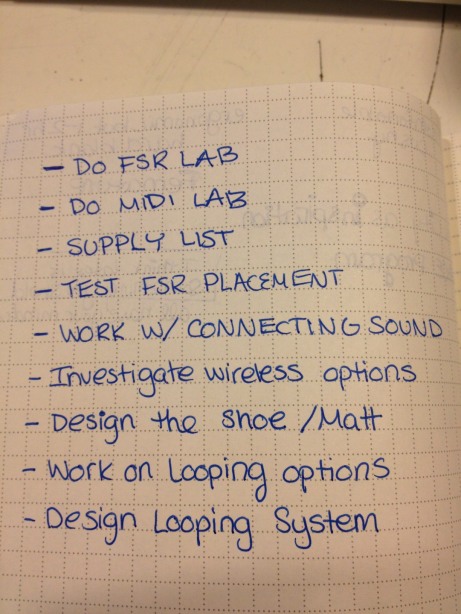Although we successfully connected both shoes using Bluetooth, the longest both stayed paired for was about 5 min. That just wasn’t going to cut it for the 4 hour ITP Spring Show! There’s nothing like an approaching deadline to kick your productivity into high gear!
Having no knowledge of XBee radios, my best resources were :
Programming the XBee, example projects, etc:
Making things Talk: Project 10 Duplex Radio Transmission (& other XBee projects throughout the book)
Tips on programming XBee, example projects, lists of common mistakes, etc.:
http://www.faludi.com/projects/zigbee/
Sparkfun’s list of AT commands for programming the XBee:
https://dlnmh9ip6v2uc.cloudfront.net/learn/materials/29/22AT%20Commands.pdf
An example using the Lilypad Arduino and Lilypad XBee connected (which I ended up using.):
http://thegeekmovement.com/blog/?p=63
The Solution:
4 Radios, 2 Networks, 1 Max patch. Although much of what I read showed that I could use one radio to receive and two to transmit, in my haste to make it work in 2 days, I used two pairs of radios. The beauty of Max MSP is that it can communicate with multiple serial ports at once. So, two XBee radios connected via USB to my computer, and two XBee radios nestled on top of Lilypad XBee boards lived in each shoe. The Lilypad Arduino’s and battery also were on board all snug inside the shoe pouch. Surprisingly, the entire thing was still so light that I could not tell I had something strapped to my foot.
Here’s the final setup:
Lilypad Arduino; XBee Lilypad; Battery; Clip Pouch
Innersoles with Force Sensitive Resistors;
2 XBee radios connected via USB; Max MSP patch sending out MIDI; Garageband












































